1 of 10
Download to read offline
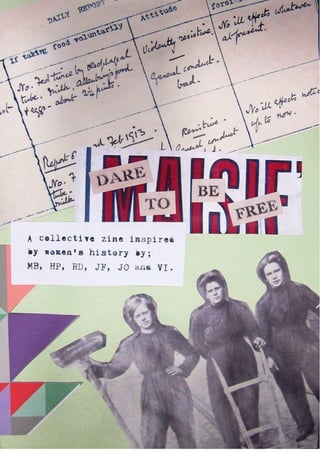



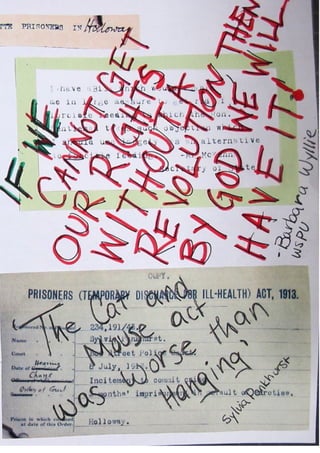
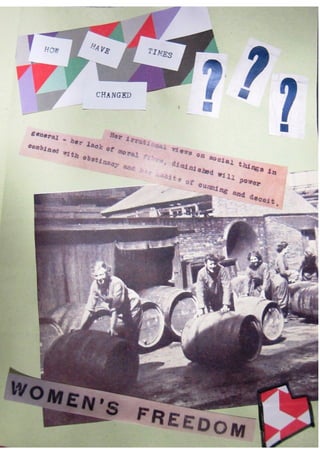

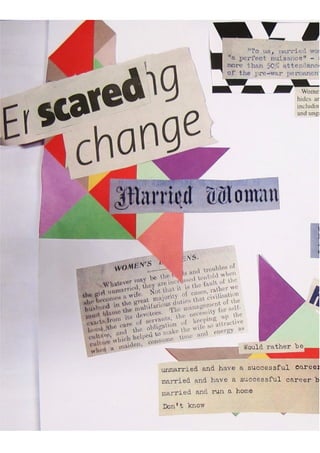

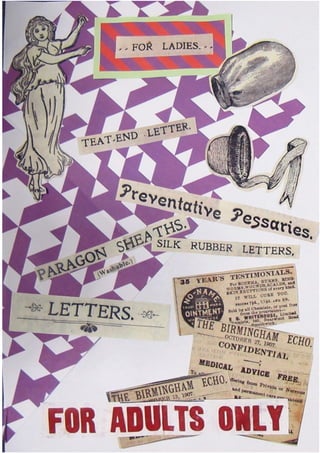
Ad
Recommended
Represión del Liberalismo e Indepencia de GreciaRosa Lara
?
El documento resume los principales eventos políticos en Europa entre 1815 y 1830 relacionados con la represión del liberalismo y la independencia de Grecia. Metternich estableció un nuevo sistema para reprimir los movimientos liberales en Alemania, Espa?a, Italia y Portugal. A pesar de la represión, los movimientos nacionalistas continuaron desafiando el orden establecido en Viena. Finalmente, Grecia logró su independencia de Turquía después de una guerra que terminó con el tratado de 1829.Diapositiva cun proyectoJohana Hinestroza Garcia
?
Este documento propone usar charlas pedagógicas para apoyar a las personas con discapacidad en el municipio de Chigorodo. Los objetivos son crear conciencia en la comunidad, mejorar la calidad de vida de las personas con discapacidad a través de programas sociales, y brindar atención, orientación y capacitación. El municipio tiene un alto porcentaje de personas con discapacidad que enfrentan barreras de aprendizaje, empleo y participación. Las charlas pedagógicas pretenden concientizar a la comunidad para apoyarHonduras: Administración Lobo dicta auto de prisión contra líder Lenca Berta ...Crónicas del despojo
?
El juzgado de Intibucá ha ordenado la prisión de Berta Cáceres, líder indígena lenca, bajo acusaciones falsas, en un contexto donde el estado de derecho en Honduras se ha desvanecido y los derechos de los pueblos indígenas son sistemáticamente violados. Cáceres denuncia presiones de empresas como DESA y la manipulación judicial para silenciar la resistencia a la destrucción de sus ríos y territorios. La comunidad y organizaciones internacionales exigen su liberación y la suspensión de proyectos que amenazan su vida y cultura.Jocs florals dofinsp4 a
Jocs florals dofinsp4 aimma palahi
?
The class of dolphins participated in the floral games of 2010 held at an elementary school. The dolphin class likely performed or presented in some way as part of the floral games event. The floral games seem to be a tradition or annual event at the elementary school mentioned.Relieve EuropeoRosa Lara
?
Europa tiene varios ríos principales que desembocan en diferentes mares y océanos alrededor del continente, incluyendo el Rin que desemboca en el Mar del Norte, el Danubio en el Mar Negro, y el Loira y el Tajo en el Océano Atlántico.England’s Immigrants: Medieval lives - Lesson 1
England’s Immigrants: Medieval lives - Lesson 1The-National-Archives
?
This document discusses life in 15th century England. Students are asked to learn about three people who lived during this time period: Luket Nantron, Nicolas Jone, and Gervase le Vulre. Working in groups, students will research one of these individuals and create a quick sketch to present to the class. The document emphasizes understanding historical sources of information and considering other ways these stories from the past may be known. For homework, students are asked to further research these three people or others using the provided database and explain what they find or why certain individuals have limited information.England’s Immigrants: How can we investigate diversity - Lesson 3
England’s Immigrants: How can we investigate diversity - Lesson 3The-National-Archives
?
This document discusses how historians have learned about England's immigrant population from 1330 to 1550. It examines original documents like alien subsidies, which taxed immigrants, and letters of denization, which granted rights. These documents reveal that immigrants were taxed more than citizens and needed official approval, showing some mistrust between immigrants and the government. They also provide insights into immigrants' wealth, loyalty to England, and efforts to avoid taxes.England’s Immigrants: Did trade and migration change - Lesson 1
England’s Immigrants: Did trade and migration change - Lesson 1The-National-Archives
?
1) The document discusses England's trade and migration before 1560, focusing on an investigation of the early 16th century.
2) Wool and woollen cloth dominated England's trade, though other industries employed foreign craftsmen as well, such as Flemish weavers invited in the 14th century.
3) Students research primary sources on taxes levied on foreign migrants from the 15th-16th centuries to understand the main trades and role of migrants, finding textiles dominant but also other crafts like metalworking employing immigrants.England’s Immigrants: Did trade and migration change - Lesson 2
England’s Immigrants: Did trade and migration change - Lesson 2The-National-Archives
?
This document discusses two case studies from 16th century England that illustrate the impact of trade and migration on Tudor society:
1) Evil May Day 1517 - A riot in London triggered by a sermon against foreign workers. This shows tensions caused by competition for jobs from migrant workers.
2) The Stranger community at Glastonbury 1551-1553 - Protestant families fled religious persecution in France and Belgium, bringing weaving skills that benefited the English woollen trade. However, they struggled initially without proper housing or support.
The document examines how these cases suggest trade and migration both increased tensions in society but also introduced new economic opportunities through the transfer of skills from foreign entrepreneurs.England’s Immigrants: How can we investigate diversity - Lesson 2
England’s Immigrants: How can we investigate diversity - Lesson 2The-National-Archives
?
This document provides instructions for an activity where students will:
1) Create fact files on female migrants in England and another city using advanced search and keyword functions.
2) Compare if the story is similar or different for London compared to the other city.
3) Find three contrasting examples of female migrants and discuss if they came from the same country, had similar jobs, wealth levels, and how typical the examples were.England’s Immigrants: Were there really aliens - Lesson 2
England’s Immigrants: Were there really aliens - Lesson 2The-National-Archives
?
The document discusses aliens living in 15th century England, explaining that the Alien Subsidy tax was introduced by the monarch to collect money from foreign merchants during wartime and economic hardship, and that while most aliens paid the tax, some were able to avoid it by paying for letters of denization that granted them rights similar to English citizens.England’s Immigrants: Were there really aliens - Lesson 1
England’s Immigrants: Were there really aliens - Lesson 1The-National-Archives
?
This document provides an introduction to a history lesson about aliens living in medieval England. It begins by asking students to draw an alien and explains they will be learning about foreigners, or "aliens," who lived in England during this period. It then provides context about the medieval period by placing it on a timeline of major historical periods in Britain. The lesson will explore data about the numbers of aliens recorded in places like London and Norfolk during the 15th century, where they came from, and the roles of women among these immigrant populations.England’s Immigrants: How can we investigate diversity - Lesson 1
England’s Immigrants: How can we investigate diversity - Lesson 1The-National-Archives
?
The document discusses a database containing information on over 64,000 immigrants who came to England between 1330-1550. Students will use the database to investigate the origins, occupations, and other details of immigrants living in different parts of England during this period. They will then analyze what they learned to assess how diverse and multicultural England was at the time, using evidence from their database findings to support their conclusions.Magna Carta: Lesson 3
Magna Carta: Lesson 3The-National-Archives
?
The document discusses a classroom activity where students are asked to analyze sources from 1214-1215 related to King John and the signing of the Magna Carta in 1215. The sources provide context for the political situation preceding the Magna Carta. Students are then asked to determine if the Magna Carta was a document that only benefited barons or if it established important principles about how the king can rule that benefited all of England. They are instructed to write a short essay with their conclusion and cite evidence from the Magna Carta sources.Magna Carta: Lesson 2
Magna Carta: Lesson 2The-National-Archives
?
Magna Carta was a document signed in 1215 between King John of England and a group of barons that limited the king's power and protected certain legal rights. It established that the king was not above the law and guaranteed rights for "freemen" and the city of London. The document consisted of 63 clauses and was sealed on June 15, 1215 at Runnymede near Windsor. While it primarily protected baronial rights and established liberties for the English nobility, Magna Carta laid the foundation for constitutional law in England and protected customary rights of all freemen in the kingdom.Magna Carta lesson 1
Magna Carta lesson 1The-National-Archives
?
The document discusses introducing students to an upcoming activity where they will briefly view an image and then share what they saw with the class, noting they will be amazed by how much they can observe in a short time. It then provides instructions counting down from 5 to reveal the image and have students share what they saw and any questions.Glenn Cumiskey - UKAD 2016 forum
Glenn Cumiskey - UKAD 2016 forumThe-National-Archives
?
The document discusses the challenges of managing the large and growing amounts of digital data created and collected by the British Museum, including collection data, digital assets, research data, web content, and business records that are in various formats and storage environments and may not have clear documentation on their intended uses and retention periods. It emphasizes the importance of building digital preservation capacity through policies, repositories, workflows, staff support, and cooperation to help data fulfill its purpose of providing evidence and fueling the progress of knowledge and civilization over time.Teresa Doherty- UKAD 2016 forum
Teresa Doherty- UKAD 2016 forumThe-National-Archives
?
Archival data from the Royal College of Nursing Library and Archive Service was inadvertently integrated into the library's resource discovery system. The library aims to provide access to 17 datasets through its website to support research on the history of nursing. Users can now search the archival records alongside the library collection through a single search interface on the library's website.David Reeve - UKAD 2016 forum
David Reeve - UKAD 2016 forumThe-National-Archives
?
Jisc is a UK nonprofit that provides digital services and solutions for higher education, operating shared infrastructure like the Janet network and negotiating deals, with the goals of implementing an enterprise information strategy including improving data quality, governance and management through initiatives like a data warehouse and SharePoint upgrades.Jonathan Cates UKAD 2016 forum
Jonathan Cates UKAD 2016 forumThe-National-Archives
?
This document discusses the future of the Hospital Records (HOSPREC) database. It provides information on accessing and downloading data from the database through various websites, including the Health and Social Care Information Centre and The National Archives. The document also asks what the next steps are regarding the database.Bill Stockting - UKAD Forum 2016
Bill Stockting - UKAD Forum 2016The-National-Archives
?
The British Library is implementing a collection metadata strategy to enhance the management and accessibility of its unpublished collections amidst increasing digital acquisitions. This initiative aims to improve the value and efficiency of collection metadata for future activities while promoting open data to broaden access and re-use opportunities. Key objectives include driving efficiencies, maintaining long-term value, and facilitating greater access to library content.Andrew Janes UKAD 2016 Forum
Andrew Janes UKAD 2016 Forum The-National-Archives
?
This document summarizes the state of catalog data at the UK National Archives. It finds that over 1 million catalog records have major data inadequacies like missing descriptions, dates, or reference codes. The State of the Catalogue approach aims to assess, reduce, and fix bad data by working through record series systematically in Excel. While the approach prioritizes fixing errors over adding new details, it helps make more records accessible and balances the variation in catalog richness. The approach is described as "radically-traditional" and focused on adequately representing records, but questions whether it is truly "data-centric". Overall the approach aims to improve discoverability by addressing the significant catalog data problems.Materiality Matters: New Approaches to Medieval Wax Seals Studies
Materiality Matters: New Approaches to Medieval Wax Seals StudiesThe-National-Archives
?
This document summarizes an interdisciplinary research project on medieval wax seals. It discusses the methodology used, which included visual examination of seals, material analysis of pigments, and historical research. Key findings included that seals were arranged vertically on cords, not horizontally, and the order varied between cords. Material analysis found the red seals contained mercury sulphide pigment, while green seals contained varying amounts of copper-based pigments like verdigris. The research aimed to better understand sealing practices and contribute data to an international wax seal database.Using the 1939 Register: recording the UK population before the war
Using the 1939 Register: recording the UK population before the warThe-National-Archives
?
This document provides information about the 1939 Register, which recorded the civilian population of England and Wales before World War 2. It details who was included in the register, such as all civilians in the country on September 29, 1939, regardless of age or nationality. It also describes who was not included, such as anyone outside the country on that date or members of the armed forces. The document explains area codes used to identify locations and that records from the register may be open or closed depending on age and death status of the individuals.Freedom of Memory: A new human right?
Freedom of Memory: A new human right?The-National-Archives
?
The document discusses the concept of 'freedom of memory' as a potential new human right, advocating for individuals and organizations to recall and express their past narratives meaningfully while safeguarding others' rights. It emphasizes the importance of memory in society, the need for effective advocacy in preserving historical records, and the responsibilities associated with memory and archival practices in the digital age. The author seeks to enhance public and policy understanding of documentary heritage and its significance.Kew lives: Reconstructing the past
Kew lives: Reconstructing the pastThe-National-Archives
?
The document discusses historical research focused on Kew Lives, particularly around Mortlake Terrace, using various sources including national archives, local libraries, and online platforms. It highlights key historical documents such as census data, service records, and notable events like a burglary involving a former police constable in 1882. The authors emphasize the importance of these sources in reconstructing local history.A Game for Christmas: Football on the Western Front, December 1914?
A Game for Christmas: Football on the Western Front, December 1914?The-National-Archives
?
The document recounts the experiences of soldiers during the Christmas truce of 1914, when British and German troops engaged in informal gatherings and football matches in no man's land. Private William Tapp and Captain Francis Black describe interactions where soldiers exchanged greetings and agreed to a temporary cessation of hostilities. Despite the ongoing war, the letters and diaries reflect moments of camaraderie that starkly contrasted with the harsh realities of trench warfare.Big Ideas: The shape of time
Big Ideas: The shape of timeThe-National-Archives
?
The document discusses the design and visualization of chronological information, referencing various historical charts, atlases, and scholarly works on timelines throughout history. It addresses the challenges of representing historical data visually and the integration of multiple datasets in timeline formats. Key contributors and significant works from different eras are highlighted, showcasing the evolution of chronographics in understanding history.More Related Content
Viewers also liked (7)
England’s Immigrants: How can we investigate diversity - Lesson 3
England’s Immigrants: How can we investigate diversity - Lesson 3The-National-Archives
?
This document discusses how historians have learned about England's immigrant population from 1330 to 1550. It examines original documents like alien subsidies, which taxed immigrants, and letters of denization, which granted rights. These documents reveal that immigrants were taxed more than citizens and needed official approval, showing some mistrust between immigrants and the government. They also provide insights into immigrants' wealth, loyalty to England, and efforts to avoid taxes.England’s Immigrants: Did trade and migration change - Lesson 1
England’s Immigrants: Did trade and migration change - Lesson 1The-National-Archives
?
1) The document discusses England's trade and migration before 1560, focusing on an investigation of the early 16th century.
2) Wool and woollen cloth dominated England's trade, though other industries employed foreign craftsmen as well, such as Flemish weavers invited in the 14th century.
3) Students research primary sources on taxes levied on foreign migrants from the 15th-16th centuries to understand the main trades and role of migrants, finding textiles dominant but also other crafts like metalworking employing immigrants.England’s Immigrants: Did trade and migration change - Lesson 2
England’s Immigrants: Did trade and migration change - Lesson 2The-National-Archives
?
This document discusses two case studies from 16th century England that illustrate the impact of trade and migration on Tudor society:
1) Evil May Day 1517 - A riot in London triggered by a sermon against foreign workers. This shows tensions caused by competition for jobs from migrant workers.
2) The Stranger community at Glastonbury 1551-1553 - Protestant families fled religious persecution in France and Belgium, bringing weaving skills that benefited the English woollen trade. However, they struggled initially without proper housing or support.
The document examines how these cases suggest trade and migration both increased tensions in society but also introduced new economic opportunities through the transfer of skills from foreign entrepreneurs.England’s Immigrants: How can we investigate diversity - Lesson 2
England’s Immigrants: How can we investigate diversity - Lesson 2The-National-Archives
?
This document provides instructions for an activity where students will:
1) Create fact files on female migrants in England and another city using advanced search and keyword functions.
2) Compare if the story is similar or different for London compared to the other city.
3) Find three contrasting examples of female migrants and discuss if they came from the same country, had similar jobs, wealth levels, and how typical the examples were.England’s Immigrants: Were there really aliens - Lesson 2
England’s Immigrants: Were there really aliens - Lesson 2The-National-Archives
?
The document discusses aliens living in 15th century England, explaining that the Alien Subsidy tax was introduced by the monarch to collect money from foreign merchants during wartime and economic hardship, and that while most aliens paid the tax, some were able to avoid it by paying for letters of denization that granted them rights similar to English citizens.England’s Immigrants: Were there really aliens - Lesson 1
England’s Immigrants: Were there really aliens - Lesson 1The-National-Archives
?
This document provides an introduction to a history lesson about aliens living in medieval England. It begins by asking students to draw an alien and explains they will be learning about foreigners, or "aliens," who lived in England during this period. It then provides context about the medieval period by placing it on a timeline of major historical periods in Britain. The lesson will explore data about the numbers of aliens recorded in places like London and Norfolk during the 15th century, where they came from, and the roles of women among these immigrant populations.England’s Immigrants: How can we investigate diversity - Lesson 1
England’s Immigrants: How can we investigate diversity - Lesson 1The-National-Archives
?
The document discusses a database containing information on over 64,000 immigrants who came to England between 1330-1550. Students will use the database to investigate the origins, occupations, and other details of immigrants living in different parts of England during this period. They will then analyze what they learned to assess how diverse and multicultural England was at the time, using evidence from their database findings to support their conclusions.More from The-National-Archives (20)
Magna Carta: Lesson 3
Magna Carta: Lesson 3The-National-Archives
?
The document discusses a classroom activity where students are asked to analyze sources from 1214-1215 related to King John and the signing of the Magna Carta in 1215. The sources provide context for the political situation preceding the Magna Carta. Students are then asked to determine if the Magna Carta was a document that only benefited barons or if it established important principles about how the king can rule that benefited all of England. They are instructed to write a short essay with their conclusion and cite evidence from the Magna Carta sources.Magna Carta: Lesson 2
Magna Carta: Lesson 2The-National-Archives
?
Magna Carta was a document signed in 1215 between King John of England and a group of barons that limited the king's power and protected certain legal rights. It established that the king was not above the law and guaranteed rights for "freemen" and the city of London. The document consisted of 63 clauses and was sealed on June 15, 1215 at Runnymede near Windsor. While it primarily protected baronial rights and established liberties for the English nobility, Magna Carta laid the foundation for constitutional law in England and protected customary rights of all freemen in the kingdom.Magna Carta lesson 1
Magna Carta lesson 1The-National-Archives
?
The document discusses introducing students to an upcoming activity where they will briefly view an image and then share what they saw with the class, noting they will be amazed by how much they can observe in a short time. It then provides instructions counting down from 5 to reveal the image and have students share what they saw and any questions.Glenn Cumiskey - UKAD 2016 forum
Glenn Cumiskey - UKAD 2016 forumThe-National-Archives
?
The document discusses the challenges of managing the large and growing amounts of digital data created and collected by the British Museum, including collection data, digital assets, research data, web content, and business records that are in various formats and storage environments and may not have clear documentation on their intended uses and retention periods. It emphasizes the importance of building digital preservation capacity through policies, repositories, workflows, staff support, and cooperation to help data fulfill its purpose of providing evidence and fueling the progress of knowledge and civilization over time.Teresa Doherty- UKAD 2016 forum
Teresa Doherty- UKAD 2016 forumThe-National-Archives
?
Archival data from the Royal College of Nursing Library and Archive Service was inadvertently integrated into the library's resource discovery system. The library aims to provide access to 17 datasets through its website to support research on the history of nursing. Users can now search the archival records alongside the library collection through a single search interface on the library's website.David Reeve - UKAD 2016 forum
David Reeve - UKAD 2016 forumThe-National-Archives
?
Jisc is a UK nonprofit that provides digital services and solutions for higher education, operating shared infrastructure like the Janet network and negotiating deals, with the goals of implementing an enterprise information strategy including improving data quality, governance and management through initiatives like a data warehouse and SharePoint upgrades.Jonathan Cates UKAD 2016 forum
Jonathan Cates UKAD 2016 forumThe-National-Archives
?
This document discusses the future of the Hospital Records (HOSPREC) database. It provides information on accessing and downloading data from the database through various websites, including the Health and Social Care Information Centre and The National Archives. The document also asks what the next steps are regarding the database.Bill Stockting - UKAD Forum 2016
Bill Stockting - UKAD Forum 2016The-National-Archives
?
The British Library is implementing a collection metadata strategy to enhance the management and accessibility of its unpublished collections amidst increasing digital acquisitions. This initiative aims to improve the value and efficiency of collection metadata for future activities while promoting open data to broaden access and re-use opportunities. Key objectives include driving efficiencies, maintaining long-term value, and facilitating greater access to library content.Andrew Janes UKAD 2016 Forum
Andrew Janes UKAD 2016 Forum The-National-Archives
?
This document summarizes the state of catalog data at the UK National Archives. It finds that over 1 million catalog records have major data inadequacies like missing descriptions, dates, or reference codes. The State of the Catalogue approach aims to assess, reduce, and fix bad data by working through record series systematically in Excel. While the approach prioritizes fixing errors over adding new details, it helps make more records accessible and balances the variation in catalog richness. The approach is described as "radically-traditional" and focused on adequately representing records, but questions whether it is truly "data-centric". Overall the approach aims to improve discoverability by addressing the significant catalog data problems.Materiality Matters: New Approaches to Medieval Wax Seals Studies
Materiality Matters: New Approaches to Medieval Wax Seals StudiesThe-National-Archives
?
This document summarizes an interdisciplinary research project on medieval wax seals. It discusses the methodology used, which included visual examination of seals, material analysis of pigments, and historical research. Key findings included that seals were arranged vertically on cords, not horizontally, and the order varied between cords. Material analysis found the red seals contained mercury sulphide pigment, while green seals contained varying amounts of copper-based pigments like verdigris. The research aimed to better understand sealing practices and contribute data to an international wax seal database.Using the 1939 Register: recording the UK population before the war
Using the 1939 Register: recording the UK population before the warThe-National-Archives
?
This document provides information about the 1939 Register, which recorded the civilian population of England and Wales before World War 2. It details who was included in the register, such as all civilians in the country on September 29, 1939, regardless of age or nationality. It also describes who was not included, such as anyone outside the country on that date or members of the armed forces. The document explains area codes used to identify locations and that records from the register may be open or closed depending on age and death status of the individuals.Freedom of Memory: A new human right?
Freedom of Memory: A new human right?The-National-Archives
?
The document discusses the concept of 'freedom of memory' as a potential new human right, advocating for individuals and organizations to recall and express their past narratives meaningfully while safeguarding others' rights. It emphasizes the importance of memory in society, the need for effective advocacy in preserving historical records, and the responsibilities associated with memory and archival practices in the digital age. The author seeks to enhance public and policy understanding of documentary heritage and its significance.Kew lives: Reconstructing the past
Kew lives: Reconstructing the pastThe-National-Archives
?
The document discusses historical research focused on Kew Lives, particularly around Mortlake Terrace, using various sources including national archives, local libraries, and online platforms. It highlights key historical documents such as census data, service records, and notable events like a burglary involving a former police constable in 1882. The authors emphasize the importance of these sources in reconstructing local history.A Game for Christmas: Football on the Western Front, December 1914?
A Game for Christmas: Football on the Western Front, December 1914?The-National-Archives
?
The document recounts the experiences of soldiers during the Christmas truce of 1914, when British and German troops engaged in informal gatherings and football matches in no man's land. Private William Tapp and Captain Francis Black describe interactions where soldiers exchanged greetings and agreed to a temporary cessation of hostilities. Despite the ongoing war, the letters and diaries reflect moments of camaraderie that starkly contrasted with the harsh realities of trench warfare.Big Ideas: The shape of time
Big Ideas: The shape of timeThe-National-Archives
?
The document discusses the design and visualization of chronological information, referencing various historical charts, atlases, and scholarly works on timelines throughout history. It addresses the challenges of representing historical data visually and the integration of multiple datasets in timeline formats. Key contributors and significant works from different eras are highlighted, showcasing the evolution of chronographics in understanding history.Putting it all together: using archives to discover your community's involvem...
Putting it all together: using archives to discover your community's involvem...The-National-Archives
?
The document discusses the First World War and its impact on the community, specifically focusing on war memorials. It lists various resources for researching soldiers' service records, including websites and archives. Additionally, it mentions census and school records as tools for historical inquiry.Civil servants-and-the-first-world-war
Civil servants-and-the-first-world-warThe-National-Archives
?
Government departments had fewer staff but more work during World War I, and civil servants were located in departments outside of Whitehall as well. The document lists various government departments and record collections that show how civil servants and records were dispersed during the war years from 1916-1918. It provides citations and references to help locate relevant records from this period.Inventions that didn't change the world
Inventions that didn't change the worldThe-National-Archives
?
The document provides a detailed account of various Victorian inventions, highlighting their intended functions and societal contributions. It includes unique designs ranging from improved locomotives and health devices to transport and leisure equipment. Each entry reflects the innovative spirit of the era, emphasizing attempts to enhance daily life and public utility.1974: forty years on
1974: forty years onThe-National-Archives
?
This document provides an overview of key political and economic events that occurred in the United Kingdom in 1974. It summarizes the oil crisis of 1973 and the impact on inflation and the economy. It also mentions the resignation of Prime Minister Edward Heath in March 1974 after losing a vote of confidence, the election of Harold Wilson as Prime Minister, and the resignation of President Richard Nixon in August 1974 in the face of impeachment over the Watergate scandal. Additionally, it briefly outlines some of the top singles in the UK music charts throughout the year.From British Bobby to Hong Kong Copper
From British Bobby to Hong Kong CopperThe-National-Archives
?
This document provides a summary of the history of policing in Hong Kong from its origins as a British colony through the 21st century. It mentions the establishment of the Hong Kong Police Force through ordinances and the recruitment of constables from British police forces. Specific archives and records from The National Archives in the UK are referenced that provide historical information on police stations, annual reports, and the aftermath of events like typhoons. The document also lists those from the Hong Kong Police who were killed or died during World War 1.Putting it all together: using archives to discover your community's involvem...
Putting it all together: using archives to discover your community's involvem...The-National-Archives
?
Ad
Recently uploaded (20)
Final Demonstration Three Branches of Government.pptx
Final Demonstration Three Branches of Government.pptxdanilynolinares
?
Demonstration on Three Branches of GovernmentStep 7_Investment Programming Invest.pptx
Step 7_Investment Programming Invest.pptxdanilynolinares
?
Investment Programming Government Orientation一比一原版(贬诲惭毕业证)斯图加特媒体学院毕业证如何办理
一比一原版(贬诲惭毕业证)斯图加特媒体学院毕业证如何办理taqyed
?
HdM斯图加特媒体学院毕业证书多少钱【q薇1954292140】1:1原版斯图加特媒体学院毕业证+HdM成绩单【q薇1954292140】完美还原海外各大学毕业材料上的工艺:水印,阴影底纹,钢印LOGO烫金烫银,LOGO烫金烫银复合重叠。文字图案浮雕、激光镭射、紫外荧光、温感、复印防伪等防伪工艺。
【主营项目】
一、工作未确定,回国需先给父母、亲戚朋友看下文凭的情况,办理毕业证|办理文凭: 买大学毕业证|买大学文凭【q薇1954292140】学位证明书如何办理申请?
二、回国进私企、外企、自己做生意的情况,这些单位是不查询毕业证真伪的,而且国内没有渠道去查询国外文凭的真假,也不需要提供真实教育部认证。鉴于此,办理斯图加特媒体学院毕业证|HdM成绩单【q薇1954292140】国外大学毕业证, 文凭办理, 国外文凭办理, 留信网认证
三.材料咨询办理、认证咨询办理请加学历顾问【微信:1954292140】毕业证购买指大学文凭购买,毕业证办理和文凭办理。学院文凭定制,学校原版文凭补办,扫描件文凭定做,100%文凭复刻。UN World Marine Fishery Health Situation Full Report 2025
UN World Marine Fishery Health Situation Full Report 2025Energy for One World
?
UN FAO report
June 2025
Nice UN Oceans ConferenceStrategic Planning for Grassroots Organizations 2025.pptx.pptx
Strategic Planning for Grassroots Organizations 2025.pptx.pptxJoyce Lewis-Andrews
?
Twenty-eight year nonprofit veteran, Joyce Lewis-Andrews’ strategic planning model provides a practical framework, relationship-building approach, and a focused process necessary to address four key goals of organizational sustainability.The Data City, United Kingdom - Fatima Garcia
The Data City, United Kingdom - Fatima GarciaOECD CFE
?
Presentation by Fatima Garcia Elena (Consultant Data Scientist, The Data City, United Kingdom) at the OECD TPI Orkestra conference "From analysis to action: Harnessing local policies to boost productivity" held in Trento, Italy on 5-6 June 2025.
More info: https://oe.cd/5ZDOutreach Proramme on Sensitizing the Diductor for Better TDS / TCS Compliance
Outreach Proramme on Sensitizing the Diductor for Better TDS / TCS ComplianceCOLOURIMPRESSION
?
Outreach Proramme on Sensitizing the Diductor for Better TDS / TCS Compliance
Org By : Treasury BandaHow SafeLives Is Working to End Domestic Abuse
How SafeLives Is Working to End Domestic AbuseMark Lyttleton
?
The nationwide charity SafeLives is committed to ending domestic abuse for good. Last year, the charity trained over 11,500 first responders and professionals and reached nearly 100,000 child and 90,000 adult survivors via its programmes. 复刻加拿大硕士毕业证温莎大学文凭证书鲍奥学生卡
复刻加拿大硕士毕业证温莎大学文凭证书鲍奥学生卡taqyed
?
UW温莎大学毕业证书多少钱【q薇1954292140】1:1原版温莎大学毕业证+UW成绩单【q薇1954292140】完美还原海外各大学毕业材料上的工艺:水印,阴影底纹,钢印LOGO烫金烫银,LOGO烫金烫银复合重叠。文字图案浮雕、激光镭射、紫外荧光、温感、复印防伪等防伪工艺。
【主营项目】
一、工作未确定,回国需先给父母、亲戚朋友看下文凭的情况,办理毕业证|办理文凭: 买大学毕业证|买大学文凭【q薇1954292140】学位证明书如何办理申请?
二、回国进私企、外企、自己做生意的情况,这些单位是不查询毕业证真伪的,而且国内没有渠道去查询国外文凭的真假,也不需要提供真实教育部认证。鉴于此,办理温莎大学毕业证|UW成绩单【q薇1954292140】国外大学毕业证, 文凭办理, 国外文凭办理, 留信网认证
三.材料咨询办理、认证咨询办理请加学历顾问【微信:1954292140】毕业证购买指大学文凭购买,毕业证办理和文凭办理。学院文凭定制,学校原版文凭补办,扫描件文凭定做,100%文凭复刻。Citizen Perception Survey (CPS) 2024 | Bangladesh Bureau of Statistics
Citizen Perception Survey (CPS) 2024 | Bangladesh Bureau of StatisticsRazin Mustafiz
?
Source: https://qci.qr-code.click/uploads/pdf/1750052592930_684faec2e2dca.pdfThe Environmental Cost of Grand Celebrations
The Environmental Cost of Grand CelebrationsHarsh Mishra
?
Here we will understand the impact on the environment that grand celebrations can have.Government at a Glance 2025 Launch Presentation.pdf
Government at a Glance 2025 Launch Presentation.pdfOECD Governance
?
Published every two years, Government at a Glance provides reliable, internationally comparable indicators on government activities and their results in OECD Member countries and accession candidate countries.Abhay Bhutada Foundation Enables ?50 Entry to Shivsrushti
Abhay Bhutada Foundation Enables ?50 Entry to ShivsrushtiSwapnil Pednekar
?
Experience history without the high price. Shivsrushti’s ?50 entry, powered by the Abhay Bhutada Foundation, invites families and students to explore Shivaji Maharaj’s legacy like never before—offer ends soon!
加拿大爱德华王子岛大学成绩单范本调鲍笔贰滨毕业完成信鲍笔贰滨成绩单防伪皑100%复刻
加拿大爱德华王子岛大学成绩单范本调鲍笔贰滨毕业完成信鲍笔贰滨成绩单防伪皑100%复刻Taqyea
?
1:1原版爱德华王子岛大学毕业证+UPEI成绩单【Q微:1954 292 140】鉴于此,UPEIdiploma爱德华王子岛大学挂科处理解决方案UPEI毕业证成绩单专业服务学历认证【Q微:1954 292 140】办理教育部学历认证,留学回国证明,爱德华王子岛大学毕业证、爱德华王子岛大学成绩单、爱德华王子岛大学文凭(留信学历认证+永久存档查询)办理本科+硕士+博士毕业证成绩单学历认证,我们一直是留学生的首选,质量行业第一,诚信可靠。
【爱德华王子岛大学成绩单一站式办理专业技术完美呈现University of Prince Edward Island Transcripts】
购买日韩成绩单、英国大学成绩单、美国大学成绩单、澳洲大学成绩单、加拿大大学成绩单(q微1954292140)新加坡大学成绩单、新西兰大学成绩单、爱尔兰成绩单、西班牙成绩单、德国成绩单。成绩单的意义主要体现在证明学习能力、评估学术背景、展示综合素质、提高录取率,以及是作为留信认证申请材料的一部分。
爱德华王子岛大学成绩单能够体现您的的学习能力,包括爱德华王子岛大学课程成绩、专业能力、研究能力。(q微1954292140)具体来说,成绩报告单通常包含学生的学习技能与习惯、各科成绩以及老师评语等部分,因此,成绩单不仅是学生学术能力的证明,也是评估学生是否适合某个教育项目的重要依据!
【主营项目】
一.毕业证【q微1954292140】成绩单、使馆认证、教育部认证、雅思托福成绩单、学生卡等!
二.真实使馆公证(即留学回国人员证明,不成功不收费)
三.真实教育部学历学位认证(教育部存档!教育部留服网站永久可查)
四.办理各国各大学文凭(一对一专业服务,可全程监控跟踪进度)Doc 9626.MANUAL ON THE REGULATION OF INTERNATIONAL AIR TRANSPORT
Doc 9626.MANUAL ON THE REGULATION OF INTERNATIONAL AIR TRANSPORTFaisalKhan876189
?
Presentation on MANUAL ON THE REGULATION OF INTERNATIONAL AIR TRANSPORT定制鲍奥翱蹿蹿别谤英国华威大学毕业证范本,鲍奥学历证书
定制鲍奥翱蹿蹿别谤英国华威大学毕业证范本,鲍奥学历证书taqyed
?
鉴于此,办理UW大学毕业证华威大学毕业证书【q薇1954292140】留学一站式办理学历文凭直通车(华威大学毕业证UW成绩单原版华威大学学位证假文凭)未能正常毕业?【q薇1954292140】办理华威大学毕业证成绩单/留信学历认证/学历文凭/使馆认证/留学回国人员证明/录取通知书/Offer/在读证明/成绩单/网上存档永久可查!
如果您处于以下几种情况:
◇在校期间,因各种原因未能顺利毕业……拿不到官方毕业证
◇面对父母的压力,希望尽快拿到;
◇不清楚认证流程以及材料该如何准备;
◇回国时间很长,忘记办理;
◇回国马上就要找工作,办给用人单位看;
◇企事业单位必须要求办理的
◇需要报考公务员、购买免税车、落转户口
◇申请留学生创业基金
【办理华威大学成绩单Buy The University of Warwick Transcripts】
购买日韩成绩单、英国大学成绩单、美国大学成绩单、澳洲大学成绩单、加拿大大学成绩单(q微1954292140)新加坡大学成绩单、新西兰大学成绩单、爱尔兰成绩单、西班牙成绩单、德国成绩单。成绩单的意义主要体现在证明学习能力、评估学术背景、展示综合素质、提高录取率,以及是作为留信认证申请材料的一部分。
华威大学成绩单能够体现您的的学习能力,包括华威大学课程成绩、专业能力、研究能力。(q微1954292140)具体来说,成绩报告单通常包含学生的学习技能与习惯、各科成绩以及老师评语等部分,因此,成绩单不仅是学生学术能力的证明,也是评估学生是否适合某个教育项目的重要依据!DFARS Part 236 - Construction and Architect - Engineer Contracts
DFARS Part 236 - Construction and Architect - Engineer ContractsJSchaus & Associates
?
2025 - JSchaus & Associates in Washington DC present a complimentary webinar series covering The DFARS, Defense Federal Acquisition Regulation Supplement. Learn about US Federal Government Contracting with The Department of Defense, DoD. Defense Contracting. Defense Acquisition. Federal Contracting.
Link To Video:
https://youtu.be/1VW0_RzfYPM
Subscribe to Our YouTube Channel for complimentary access to US Federal Government Contracting videos:
https://www.youtube.com/@jenniferschaus/videos最新版美国路易斯安那理工大学毕业证(尝补罢别肠丑毕业证书)原版定制
最新版美国路易斯安那理工大学毕业证(尝补罢别肠丑毕业证书)原版定制taqyea
?
一比一还原路易斯安那理工大学毕业证/LaTech毕业证书2025原版【q薇1954292140】我们专业办理澳洲大学毕业证成绩单,美国大学毕业证成绩单,英国大学毕业证成绩单,加拿大大学毕业证成绩单,新加坡大学毕业证成绩单,新西兰大学毕业证成绩单,韩国大学毕业证成绩单,日本大学毕业证成绩单。
【复刻一套路易斯安那理工大学毕业证成绩单信封等材料最强攻略,Buy Louisiana Tech University Transcripts】
购买日韩成绩单、英国大学成绩单、美国大学成绩单、澳洲大学成绩单、加拿大大学成绩单(q微1954292140)新加坡大学成绩单、新西兰大学成绩单、爱尔兰成绩单、西班牙成绩单、德国成绩单。成绩单的意义主要体现在证明学习能力、评估学术背景、展示综合素质、提高录取率,以及是作为留信认证申请材料的一部分。
路易斯安那理工大学成绩单能够体现您的的学习能力,包括路易斯安那理工大学课程成绩、专业能力、研究能力。(q微1954292140)具体来说,成绩报告单通常包含学生的学习技能与习惯、各科成绩以及老师评语等部分,因此,成绩单不仅是学生学术能力的证明,也是评估学生是否适合某个教育项目的重要依据!
我们承诺采用的是学校原版纸张(原版纸质、底色、纹路)我们工厂拥有全套进口原装设备,特殊工艺都是采用不同机器制作,仿真度基本可以达到100%,所有成品以及工艺效果都可提前给客户展示,不满意可以根据客户要求进行调整,直到满意为止!
【主营项目】
一、工作未确定,回国需先给父母、亲戚朋友看下文凭的情况,办理毕业证|办理文凭: 买大学毕业证|买大学文凭【q薇1954292140】路易斯安那理工大学学位证明书如何办理申请?
二、回国进私企、外企、自己做生意的情况,这些单位是不查询毕业证真伪的,而且国内没有渠道去查询国外文凭的真假,也不需要提供真实教育部认证。鉴于此,办理美国成绩单路易斯安那理工大学毕业证【q薇1954292140】国外大学毕业证, 文凭办理, 国外文凭办理, 留信网认证
三.材料咨询办理、认证咨询办理请加学历顾问【微信:1954292140】路易斯安那理工大学毕业证购买指大学文凭购买,毕业证办理和文凭办理。学院文凭定制,学校原版文凭补办,扫描件文凭定做,100%文凭复刻。Ad
